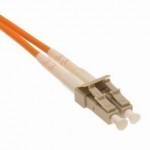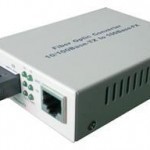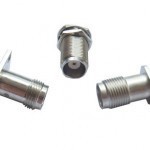In fiber optics, there are hundreds of different fibers that are laid to provide telecommunications to people. It is important, though, for these companies to be able to change which fiber the information is running on. Therefore, they use what is called an optical switch. In technical terms, an optical switch is a switch that allows for signals that are traveling along one line of fiber to be switched selectively from one single circuit to another. Types of Optical Switches There are many different types of optical switches. They all Read More
Null Modem Adapter

An adapter is a hardware device or software component that converts transmitted data from one presentation form to another. The data presentation can be, for example, a message sent between objects in an application or a packet sent through a network. A null modem adapter enables users to transform a normal serial cable into a null modem. It contains the necessary crosslinks between the signals. A null modem adapter converts any straight-through wired cable with connectors into a null modem "cross-wired" configuration. This configuration is suitable for many serial PC Read More
Wavelength Division Multiplexing
Wavelength Division Multiplexing (WDM) is a technology found in fiber optic communications. WDM uses a single fiber to transmit multiple optical signals. It does this by breaking up the signal into different frequencies or wavelengths of color. The various wavelengths indicate that different amounts of data are being transmitted simultaneously. This results in an increase in capacity and allows bidirectional communication over any single fiber. That is to say, the fiber can have a signal going in one direction and another going in the opposite direction. How WDM Works For Read More
RG-58
RG-58 is a coaxial cable that is used for wiring purposes. A coaxial cable, in general, consists of an inner conductor that is surrounded by a spacer. The coaxial cable is electrically charged and sometimes consists of different uninsulated conductors that remain entangled with one another. The insulating spacer of the cable is further surrounded by a sheath that is cylindrical in shape. The final circle is formed by an insulating jacket. The insulation surrounding the RG-58 cable carries a low impedance of around 50 or 52 ohms. It is Read More
FiOS
FiOS is a special type of data network that is offered to Fiber Optic Subscribers. The existing FiOS network is at a industry high where speed is concerned, as it offers 150 Megabits/second downloads with as much as 35 Megabits/second upload. The speeds of up to 50 Megabits/ second are offered to consumers at very high prices. 25 and 15 Megabits/second are lower options, yet they are still faster than the fastest lines available with other technologies. The fiber optic networks that are currently in place are not yet fully Read More
Cat 3
Cat 3, short for Category 3, is a UTP (Unshielded Twisted Pair) cable designed to carry voice and data up to 10 Mbps (mega bits per second), with possible transmission frequencies up to 16 MHz. Cat 3 cable is part of a family of copper cabling standards defined jointly by the Electronic Industries Alliance (EIA) and the Telecommunications Industry Association (TIA). If a cable is certified as Category 3 and not just twisted pair wire, then it will have "Cat 3" printed on the shielding. Cat 3 and Cat 5 Read More
LC Connectors

The LC connector is a small form factor fiber optic connector. The LC connector resembles a small SC connector. Lucent Technologies first developed the LC connector for TelCo environment uses. Hence, LC stands for Lucent Connectors. The LC connector has been standardized as FOCIS 10 (Fiber Optic Connector Intermateability Standards) in EIA/TIA-604-10. The LC connector uses a 1.25 mm ferrule, half the dimension of the ST ferrule or a regular ceramic ferrule connector. The LC gives excellent performance and is greatly preferred for single mode transmission. Features of LC Connectors Read More
Ethernet Fiber Media Converter

An Ethernet fiber media converter is a device that allows a connection to be made between an Ethernet and a fiber optic cable. This type of connection is important in situations where both cable types are used in a single household or office. Because telephone companies often use fiber optic cables to deliver telephone and Internet service to their customers, an Ethernet fiber media converter is sometimes necessary to bridge the gap between a telephone line and a computer. In most cases, a modem or router does this. However, when Read More
TNC Connectors

The Threaded Neill-Concelman connector, commonly known as the TNC connector, is actually just a threaded version of a standard BNC connector. With an impedance of 50 ohms, these connectors operate between frequency spectrums of 0-11 GHz. A TNC connector has a far better performance than any BNC connector when it comes to receiving microwave frequencies. Named after its creators, Paul Neill from Bell Labs and Carl Concelman of Amphenol, the TNC connector has successfully been put to use in a number of wired and radio applications. Over time, a number Read More
ST Connectors

The ST (Straight Tip) connector is a fiber optic connector which uses a plug and socket which is locked in place with a half-twist bayonet lock. The ST connector was the first defactor standard for fiber optic cabling. It was first developed by AT&T. ST connectors were leading connectors in the late 80s and early 90s. They are amongst the most frequently used fiber optic connectors in networking applications. They are cylindrically shaped with twist lock coupling, 2.5mm keyed ferrule. They are used both for short distance applications and long Read More


Share on: